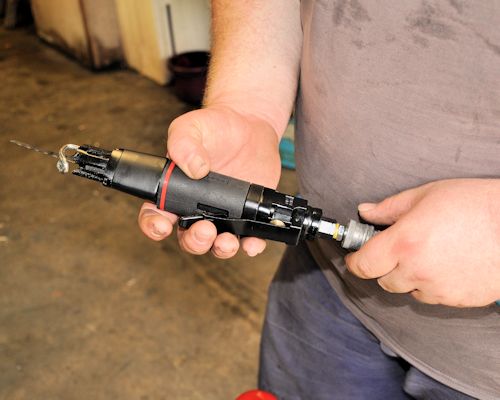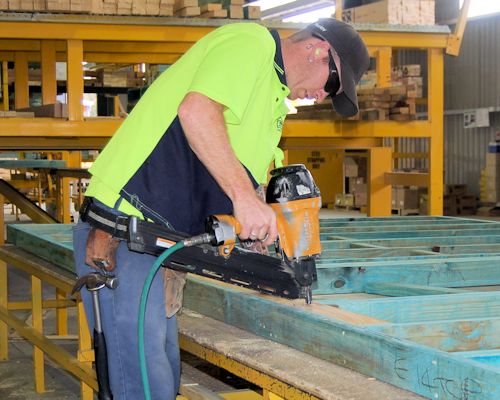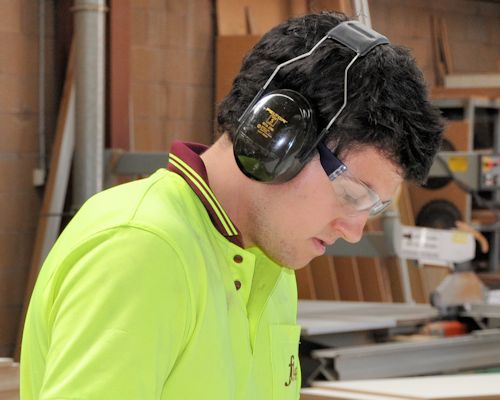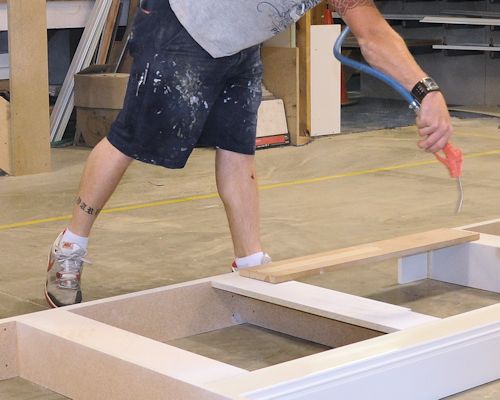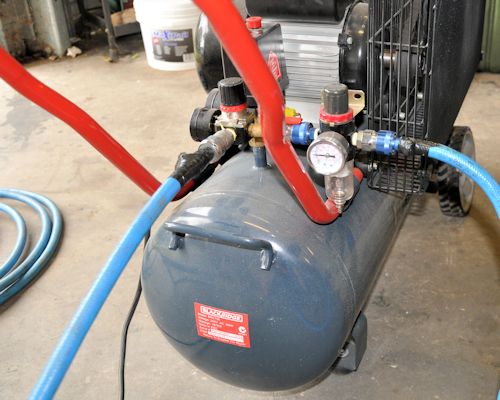Compressed air
 Audio for slide 1 (mp3 |6|KB)
Audio for slide 1 (mp3 |6|KB)
For the on-site installer, it's less convenient because you need to take your own compressor with you, which in turn would still have to be powered by an electric, petrol or diesel motor.
However, it is a very useful power source when you're using a gun for nailing, stapling or spraying.
It's also handy when the jobsite doesn't have mains power connected and you already own a petrol-operated compressor.

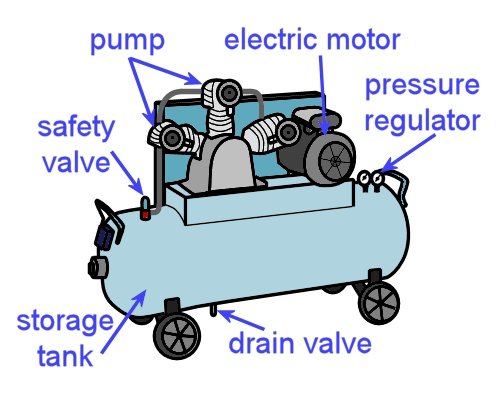 Audio for slide 3 (mp3 |6|KB)
Audio for slide 3 (mp3 |6|KB)
A receiver, or storage tank, holds the compressed air, and an automatic pressure regulator keeps it at the correct pressure by switching the pump on and off.
If the pressure gets too high, air is released through a safety valve.

 Audio for slide 5 (mp3 |6|KB)
Audio for slide 5 (mp3 |6|KB)
Different tools operate best at certain pressures, so the operating pressure needs to be checked and re-adjusted if it's found to be incorrect for a particular tool.
It's a good rule to use the minimum pressure required for the tool to operate properly.
This will help the compressor to use less power, and there'll be less wear on the tool.
If you're using a nail or staple gun, it will also reduce the chance of the fasteners countersinking too far and damaging the surface of the material you're firing into.

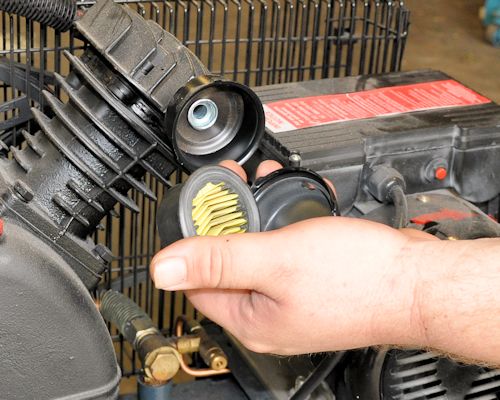 Audio for slide 6 (mp3 |6|KB)
Audio for slide 6 (mp3 |6|KB)
Routine maintenance for air compressors
Depending on the type of air compressor you're using and the tools you're working with, there will be some routine maintenance procedures that should be followed at certain times.
Your supervisor will tell you what your specific tasks are, but you can see some typical examples under the link below.
Routine maintenance procedures for air compressors


Learning activity
Audio 11 (mp3 |6|KB)Is there an air compressor in the building where you are right now? You might have it on-site with you, or in the college workshop, or at the warehouse where you're working.
If you don't have a compressor nearby, look up a typical example on the web. Choose a size that you would be likely to use at work.
Answer the following questions. You should be able to find the answers on the machine itself or in the specifications listed on the website.
If you get stuck on any questions, ask your trainer or supervisor for more information. They may also be able to show you the manufacturer's manual for the machine.
- What brand is the compressor?
- What is the cubic capacity of the receiver?
- Is the pump diesel, petrol or electric?
- What is the free air delivery rating (in litres per minute)?
- What type of air filter does it use?
If you're looking at the compressor right now and it's in operation, also answer the following questions:
- What operating pressure is it set at?
- How many hoses branch off it?
- What types of equipment is it running?

 Go to Other power sources
Go to Other power sources